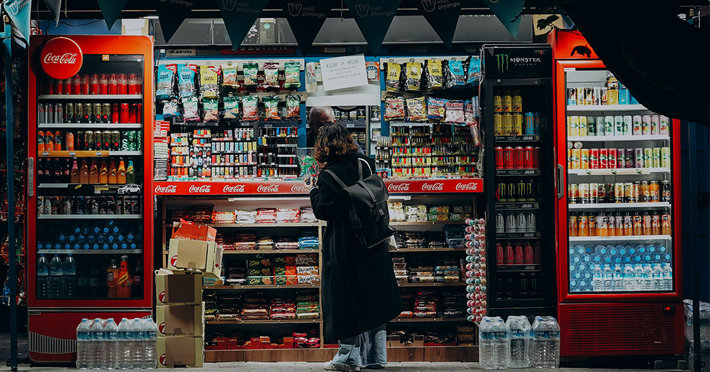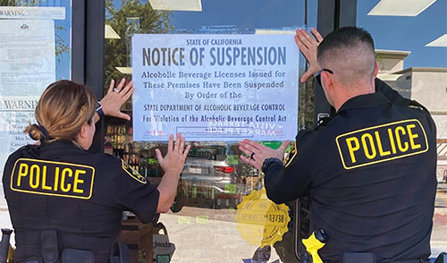Why are Efforts to Combat Underage Drinking Stalling?

Even though underage drinking remains a problem, the number of law enforcement agencies using alcohol-related enforcement strategies to prevent or uncover underage drinking is declining.
What the Findings Show
A research paper published in the Journal of Studies on Alcohol and Drugs found that even as underage drinking remains a core public health concern in many American communities, law enforcement departments are beginning to shelve their enforcement strategies for curbing teen drinking.
For the study, researchers tracked the use of several law enforcement strategies to curb teen drinking, impaired driving, and the sale of alcohol to minors and obviously intoxicated persons. The researchers examined trends in the use of such strategies from 2010 to 2019.

Image Courtesy of abc.ca.gov
In 2010, 42% of law enforcement departments used compliance checks in which an undercover youth would attempt to purchase alcohol. But in 2019, only 36.4% of departments used this strategy.
In 2010, 48.5% of law enforcement departments enforced laws prohibiting adults from providing (not necessarily selling) alcohol to underage persons. But in 2019, just 34% of departments enforced such laws.
In 2010, 84.7% of law enforcement departments enforced laws prohibiting underage individuals from possessing and consuming alcohol. But in 2019, just 66.5% of departments enforced these laws.
More law enforcement departments used sobriety checkpoints in 2010 than in 2019.
In 2010, 24.8% of law enforcement departments enforced laws prohibiting the sale of alcohol to an intoxicated person. But in 2019, just 23.8% of departments enforced such laws.
While law enforcement departments did increase their use of some strategies to curb impaired driving (like open container enforcement and saturation techniques to put more cops in areas that may be at higher risk for intoxicated driving), most enforcement strategies trended downwards from 2010 to 2019.
“Enforcement aimed at underage drinkers themselves, versus the alcohol outlets and adults who supply alcohol, were the most commonly used enforcement strategies at both time points
[2010 and 2019],”
Further, the researchers pointed out how, when law enforcement departments did address the issue, they primarily focused on the young people themselves, not the adults providing them with alcohol. “Enforcement aimed at underage drinkers themselves, versus the alcohol outlets and adults who supply alcohol, were the most commonly used enforcement strategies at both time points [2010 and 2019],” said lead study author Kathleen Lenk. “This is a common enforcement approach, but studies demonstrate it is more effective to focus on reducing access to alcohol, rather than punishing underage persons. Our results indicate the need for improvement in alcohol enforcement regarding underage drinking, impaired driving, and sales to obviously intoxicated persons.”
The Scope and Harm of Underage Drinking

According to the Centers for Disease Control and Prevention, underage drinking leads to 3,900 deaths and 225,000 years of potential life lost in the U.S. annually. It also costs the U.S. about $24 billion annually in healthcare expenses, lost labor force participation, collateral damage from automobile accidents, and other costs.
The CDC also reports that, among high school students in the U.S., about 23% drink alcohol, 11% drink alcohol to excess, 5% drink and drive, and 14% ride with a driver who has been drinking alcohol.
Despite underage drinking gradually declining in recent decades, severe harm still occurs when young people drink alcohol, especially to excess. Some of the risks and side effects include:
- Trouble at school
- Difficulties in the workplace
- Legal problems from arrest or injury
- Physical problems like hangovers and illness
- Unwanted, unplanned, and unprotected sexual activity
- Physical and sexual violence, potentially as a victim and/or aggressor
- Increased risk of suicide, homicide, motor vehicle crashes, and other unintentional injuries
- Memory problems, misuse of other substances, and shifts in brain development that can be permanent
- Alcohol poisoning, burns, falls, lacerations, workplace accidents, all leading to ER visits and potentially death
In addition to increasing law enforcement efforts to prevent youths from drinking, to intervene in youths who are drinking, and to crack down on people and stores that supply alcohol to minors, other community responses can include:
- Alcohol taxes
- Civil liability laws for alcohol-providing establishments
- Regulations on the number and concentration of alcohol outlets
Perhaps most importantly, communities must also invest heavily in public health information campaigns to inform and educate young people on the harmful aspects of consuming alcohol.
Young People Should be Educated on the Many Ways in Which Alcohol Harms Their Bodies

As soon as one drinks alcohol, the chemicals in the liquid begin having a deleterious effect on the individual’s body. Alcohol affects all areas of the body, even when one drinks “in moderation.” Some of the areas most affected by alcohol include:
- Neural function. Alcohol interferes with the brain’s communication pathways, changing how the brain looks and works. The more one drinks, the more they’ll lose control of their coordination and memory. Alcohol consumption also puts one at risk for different types of stroke.
- Cardiovascular function. There is a direct connection between alcohol consumption and heart diseases like cardiac arrhythmias, cardiomyopathy, ischemic heart disease, and hypertension.
- Digestive function. Alcohol consumption can lead to weight gain, gut leakiness, microbial complications, and colorectal cancer.
- Function of the liver. The liver often takes the brunt of alcohol’s harm on the body because the liver must process the toxins and harmful chemicals contained in alcohol. About half of the approximately 100,000 liver-related deaths in the U.S. yearly are caused by alcohol-related liver cirrhosis.
- Function of the pancreas. Drinking over time can cause the pancreas to build up a toxic substance that prevents digestion and causes other problems.
- Function of the oral cavity. Repeated alcohol consumption puts one at risk for oral cavity cancer and esophageal cancer.
- The musculoskeletal system. Alcohol consumption can lead to muscle wasting and reduced bone density. It can also impair the repair of bone fractures and cause myopathy in the muscles.
- Cancer and the immune system. Studies show about 4% of all annual cancer deaths are directly caused by alcohol-related cancers. Further, alcohol hampers the immune system, with people who drink being more likely to become ill while drunk and for up to 24 hours after drinking.
People Who Become Addicted to Alcohol Must Get Professional Help
People who drink excessively put themselves at risk of becoming addicted to alcohol. According to CDC data cited earlier, early-onset alcohol consumption is, unfortunately, a very accurate predictor of alcohol addiction later in life, meaning the earlier someone starts drinking, the more likely they are to develop an addiction to alcohol in the coming years.
Preventing young people from drinking and ensuring they are informed about alcohol is extremely important. That requires a multi-pronged approach that includes law enforcement, parents, schools, youth groups, churches, public health officials, other family members, and community leaders.
But if prevention fails and a young person becomes addicted to alcohol, they must be directed to a qualified, residential alcohol addiction treatment center. If you know someone who drinks alcohol and cannot stop on their own, please help them find treatment as soon as possible.
Sources:
- JSAD. “Alcohol Enforcement in the United States From 2010 to 2019.” Journal of Studies on Alcohol and Drugs, 2023. jsad.com
- USNews. “Police Often Fail to Enforce Laws on Underage Drinking: Study.” U.S. News, 2023. usnews.com
- CDC. “Underage Drinking.” Centers for Disease Control and Prevention, 2022. CDC.gov
- NIAAA. “Alcohol’s Effects on the Body.” National Institute on Alcohol Abuse and Alcoholism, 2023. niaaa.nih.gov


 ®
®